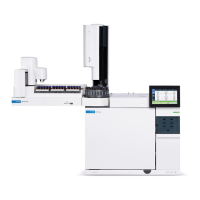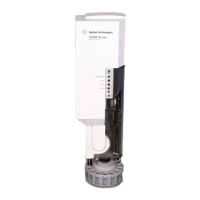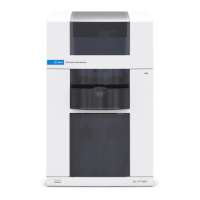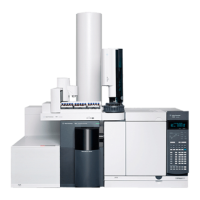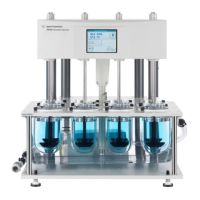Standalone Control
Running the samples
103
Running the samples
This section describes starting and stopping a run or sequence and the
movements of the automatic liquid sampler during a run when using
standalone control.
Starting a run or sequence
Start the run or sequence by pressing the start button on the injector.
What happens during a run?
From the point when you start the sequence, the automatic liquid sampler does
the following:
1. The injector reads the run parameters from the switch settings and moves
the turret, syringe carriage, plunger carrier, and tray to their home
positions.
2. If this is the first run after turning on the power, the injector goes through
the solvent wash cycle. If it is not, the injector expels any remaining
sample or solvent into a waste bottle.
3. If a tray is installed, the tray picks up a vial from position 1 (or the next
vial) and delivers it to the turret.
4. The injector fills the syringe with sample and dispenses it into one of the
waste bottles according to the “number of sample washes” set with the
control switches.
5. The injector fills the syringe with sample and dispenses it back into the
sample vial six times. This is the preset number of pumps.
6. The injector fills the syringe with the “volume” of sample set with the
control switches and injects it. The depth and speed of the injection stroke
is determined by the injection mode switch. Just before the needle pierces
the inlet septum, the injector sends a start signal to the GC.
7. After injection, the injector washes the syringe with solvent according to
the “number of solvent washes” set with the control switches.
If a tray is installed, the injector takes half of the solvent washes from the
solvent A bottle and half from the solvent B bottle. The injector dispenses

